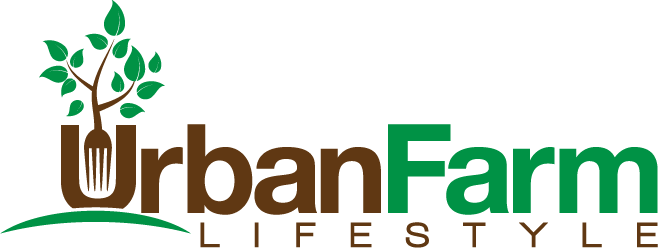Healthy Regenerative Lifestyle
USDA Dollars for Urban Farms
For those who would like to take the Urban Farm Lifestyle to the next level but lack the money to do so, one possible route may be through the US Government loan programs.
David Proctor
From Seed To Fork, Egg To Plate.
We may not live on a farm, but we can grow where we live.
USDA Dollars for Urban Farms
June 1, 2017
Urban Farm Lifestyle Magazine Published Weekly
The USDA or United States Department of Agriculture is trying to help many urban farmers through assistance programs.
In 2016 the USDA funded a dozen urban farm initiatives which was the highest amount in its history. In 2017, it is expected the USDA will increase even more funding for rooftop farms, greenhouses, and warehouses.
The USDA Microloans, is a program the can offer up to $50,000 for urban farmers. Even though this is open to all farmers, generally urban farmers have been applying for the funds due to smaller scale and requirements geared for this type farmer.
This program allows grantees to use funds for more non-traditional type purchases such as LEDs for growing with hydroponics. It still has its roots in traditional agriculture though. One of the first questions the applicant will face is how big is your field? Which is hard to answer if you don’t have one.
One of the first participants in the microloan program was Square Roots out of New York. The money was used to cover cost of seed and operating expenses before the first harvest.
Still the majority of loans still go to rural farms even though the programs directors are making efforts to try and get the money in hands of urban farmers.
This initiative does show an effort to try and help support local food systems and not just rural agriculture. This program is good news for those that would like to go beyond growing a few tomatoes to a higher volume commercial endeavor.
In 2016, the USDA published an “Urban Agriculture Toolkit,” which contains guidelines and advice for starting a green house or rooftop farm, plus how to apply for loans.
Summary of Key Resources In Toolkit
- Business Planning
- Land Access
- Soil Quality
- Water Access / Use
- Capital and Financing
- Infrastructure
- Market Development
Starting an Urban Farm:
What Are the Costs?
Start-up expenses for an urban farm will vary widely by location because many of the components (such as land or utilities) are site-specific. Start-up expenses can be broken down into a few categories:
Location
This includes acquiring the land, making sure it is zoned properly and that the necessary permits are in place, and getting an environmental assessment done. In many cases, land access and soil tests can be subsidized.
Site Preparation
Once the land is purchased or rented and all the necessary permits and tests are clear for it to operate as an urban farm, the farmer will need to prepare the land for growing. The largest associated cost (and likely largest cost of the entire operation) will be soil, but soil prices will vary by location and volume. Other costs include fencing, signage, and getting adequate water to the site.
Structures
This includes both infrastructure necessary for growing (such as high tunnels) and storing (such as a cooler). What types of structures will be needed will be dependent on location, types of crops grown, and desired length of growing season.
Growing and Selling
These are the expenses that you will expect to incur in your first year of operation (as opposed to true start-up costs, which may involve additional expenses). They include traditional farming costs such as tools, growing supplies and utilities, as well as business costs like advertising and website design.
Administrative Expenses and Operating Costs
These will be ongoing costs associated with your operation, but they are critical to take into account in year one, when you will be getting systems in place.
Costs for Indoor Growing Facilities
The costs associated with indoor growing facilities, including aquaculture and hydroponic facilities, will be very different from starting an outdoor farming operation in the city. They will also vary widely depending on the type of facility you look to build. A large-scale aquaponic facility located in a warehouse-type building may be a multi-million-dollar investment; a small aquaponics system housed in a greenhouse could be built for a few thousand dollars, or even less if you are able to use salvaged materials.
As you can see, a lot of factors have to be weighed before you start, or at least what the quide says you should do. In my opinion the best thing to do is start small and work on these items as you see that they become necessary. The best advice I can give is get outside and grow. Has this article about made you decide it is just not worth it to even try?
Watch the video below on how to keep it simple! You will fill better.
Check It Out!
Future Article
Grow Food, Make Money! YOU can do it! 1:17
Quick Tip
- Obtain a DUNS number: http://fedgov.dnb.com/ webform
- Register on SAM.gov
- Register with FAS
DUNS is Dun & Bradstreet’s (D&B) “Data Universal Numbering System”. It is a copyrighted, proprietary means of identifying business entities on a location-specific basis. A DUNS number is a unique nine-character identification number Dun & Bradstreet provides free of charge.The System for Award Management (SAM) is the Official U.S. Government registration system. Business entities that have obtained a DUNS number must register annually on SAM to be eligible to receive financial assistance. There is NO charge to register or maintain your entity registration record in SAM.
FSA: Farm Service Agency registration is required in order to qualify for many USDA grant and loan programs
Bibliography:
Garfield, Leanna. “The US Government Is Loaning Millions of Dollars to Jumpstart Urban Farming.” Business Insider. Business Insider, 27 Dec. 2016. Web. 29 May 2017.
What Did You Think?



Recent Comments